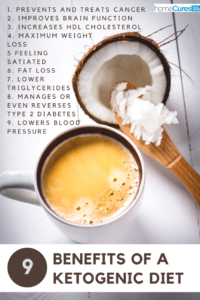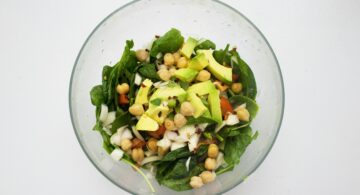An Overview of the Ketogenic Diet
High in fat, low carbohydrates, with adequate protein intake: this diet changes the way your body uses energy—burning fat instead of carbohydrates—which translates to a sustainable weight-loss plan and lifestyle for many people.
While it sounds similar to the popular Paleo Diet, among other low-carb fad diets, the Ketogenic diet has one key feature that distinguishes it from the rest: carb intake. On the Paleo diet, active people should aim for 100 to 150 grams of carbohydrates per day, while most other non-active people aim for 80 grams per day. This is not the case with the Ketogenic diet. Learn more before you hop on board.
Defining the Ketogenic Diet
Descriptions for this diet are filled with unusual words and medical terms. Knowing the three most important ones will help you understand the basics a little better. Some terms to know:
Ketones: When there isn’t enough insulin in your body from sugars (carbs), the body breaks down fat for energy and ketones are made.
Ketosis: The process in which fat is burned instead of carbohydrates. After time your body begins to burn and fuel only from fat; this is called keto-adaptation; it’s also the main goal.
Ketostix: Product used to measure your ketone levels. This helps you understand where you’re at in the process, and ensures you stay on track.
The diet was originally designed in 1924 by Russell Wilder, who found it to be an effective treatment for epilepsy. It has existed in a variety of other forms ever since and has gained in popularity over the years as a weight-loss solution.
It’s important to distinguish that ketones present in the blood or urine without being on a ketogenic diet is negative, and can be a sign or cause of diabetes. However, on this diet, having a body high in ketones is a positive side-effect.
9 Benefits of a Ketogenic Diet
The benefits of the ketogenic diet outline what every person on a weight loss journey wants, which is why it has become so popular in the fitness world.
1. Offers maximum weight loss
Low carb diets are known to rid excess water from the body (a common source of excess weight). And, because insulin levels are lowered, your kidneys are able to rid the body of excess sodium, which leads to quick weight loss within the first few weeks. Also, a ketogenic diet is one of the best ways to lose weight around your abdomen, which is super important in terms of warding off heart disease and type 2 diabetes.[1]
2. Satiates your appetite
The majority of your daily calories come from fats and protein on this diet, which means that you feel full longer.
3. Reduces fat
When you eat carbohydrates, your blood sugar spikes, which increases insulin levels. When this happens, your body is told (by the insulin) to store the broken-down carbohydrates—which are now sugars—as fat. However, people on the ketogenic diet fill up on little to no carbohydrates, keeping blood sugar levels low and steady and fat storage to a minimum.
4. Lowers triglycerides
High triglycerides are a major risk factor for heart disease. On a ketogenic diet, triglycerides decrease because you’re eating few sugars (carbs).[2]
5. Manages or even reverses type 2 diabetes
Reducing carbohydrate consumption is key to managing and even reversing type 2 diabetes. Reducing carbs means lower glucose levels and insulin levels in the bloodstream.[3]
6. Prevents and treats cancer
While this may sound far-fetched, the ketogenic diet has been used for years as a successful treatment in children with epilepsy. Also, it is well-known that cancer cells thrive on sugar. Cut out sugars (carbohydrates) and you starve the cancer cells. Dr. Thomas Seyfried is a leading researcher in the field of treating cancer nutritionally and has been studying this approach at Yale University and Boston College for 25 years.[4] Seyfried debunks the myth that cancer is hereditary and demonstrates the clear connection between what we eat (and other lifestyle factors) and cancer. His recommendation: if you have cancer, get on a low-carb, ketogenic diet.[5] In fact, Dr. Seyfried and other doctors suggest that a ketogenic diet may be more effective than chemotherapy for treating cancer.[6] There’s no argument that a low-carb diet is a far healthier approach to cancer treatment.
7. Improves brain function
The ketogenic diet has been shown to be an effective treatment against Alzheimer’s disease, autism, schizophrenia, bipolar disorder, and depression.[7]
8. Increases HDL cholesterol
Your HDLs are the “good” cholesterol in your bloodstream. Increasing HDLs lowers your risk of heart disease.[8]
9. Lowers blood pressure
Given all the other benefits, blood pressure tends to drop as well. High blood pressure is a known risk factor for heart disease, stroke, kidney failure and other diseases.[9]
How to Start the Ketogenic Diet
The first step in adapting your lifestyle to the ketogenic diet is familiarizing yourself with the different variations. Note that the suggestions made in this article and in most other reference information are based on the standard version.
The Standard Ketogenic Diet: Benefits include quick weight loss and fast entrance into ketosis. However, many complain that this version leaves them feeling too tired to workout at their usual level. The standard diet is also often hard to stick with—everyone likes a piece of toast every once in a while, right?
What you need to know:
- 60 percent of calories from fat, 35 percent from protein, 5 percent carbohydrates; 7 days a week.
- Carbs limited to 50 grams per day; 20 grams in the first few weeks. (Being strict from the start will help you enter ketosis faster.)
The Targeted Ketogenic Diet: This variation is ideal for people looking to maintain a gym regimen. This adaptation is for casual exercisers, not for heavy weight-lifters or those who perform high impact cardio.
What you need to know:
- 60 percent of calories from fat, 35 percent from protein, 5 percent carbohydrates; on days you don’t workout.
- Eat 20 to 25 more grams of carbs on days you workout to help fuel your session.
The Cyclical Ketogenic Diet: With intermittent periods of carb-loading—to re-up your depleted stores from the week—you’re able to reap the fat loss benefits while still building muscle via high-intensity workouts—strength and cardio. Aim to keep intense workouts to just three days a week.
What you need to know:
- 60 percent of calories from fat, 35 percent from protein, 5 percent carbohydrates; Monday through Friday.
- Follow the standard Ketogenic diet Monday through Friday; increase complex carb intake to 50 to 70 percent of your calories on the weekends. The actual gram amount is different for every person, and you’ll fall out of ketosis if you eat too much, so test this personally. You should eat only as many carbs on your two carb-loading days as you need for your weekly workouts.
- Eat only complex carbs on your carb-loading days: squash, brown rice, oatmeal, lentils, etc.
Ketogenic Diet Tips
- Avoid residual carbohydrates. These are the carbs you don’t even know you’re eating like nuts, seeds and fruit.
- Remember that performing low reps with heavy weights, sprinting or circuit workouts (think CrossFit) qualify as high intensity workouts, and should be done only three days a week on the cyclical diet; you may not be able to do these workouts on either of the other variations. On the other hand, yoga, jogging, long-distance running and high-rep, low weight workouts count as low intensity workouts, which you can do on both the standard and the targeted diets.
- You can eat vegetables, but always choose low-carb vegetables like spinach, cucumber, asparagus, radishes and bean sprouts. Choose healthy fats as well—see this list of fatty foods you should be eating to choose the best ones.
The Ketogenic diet, though similar to the Paleo and other low-carb diets, is actually much different. With greater carb restriction and high fat intake, dieters experience rapid weight loss and maximum results. Before you try the next fad diet, give this one a try—it just might turn into a lifestyle.
Get another metabolic boost with apple cider vinegar. To further your health by reducing inflammation, it totally makes sense to try kefir. Aside from anti-inflammatory diet, enjoy a diverse HIIT combo to beat any workout boredom.























